Welcome to The India Travel Guide
Let me guide you through what real India looks like and give you descriptions of every place you must visit whenever you are planning on visiting India. I have made sure that you remember India for what it is, and know about each and every place the country has to offer to the visitors! Happy Travels!
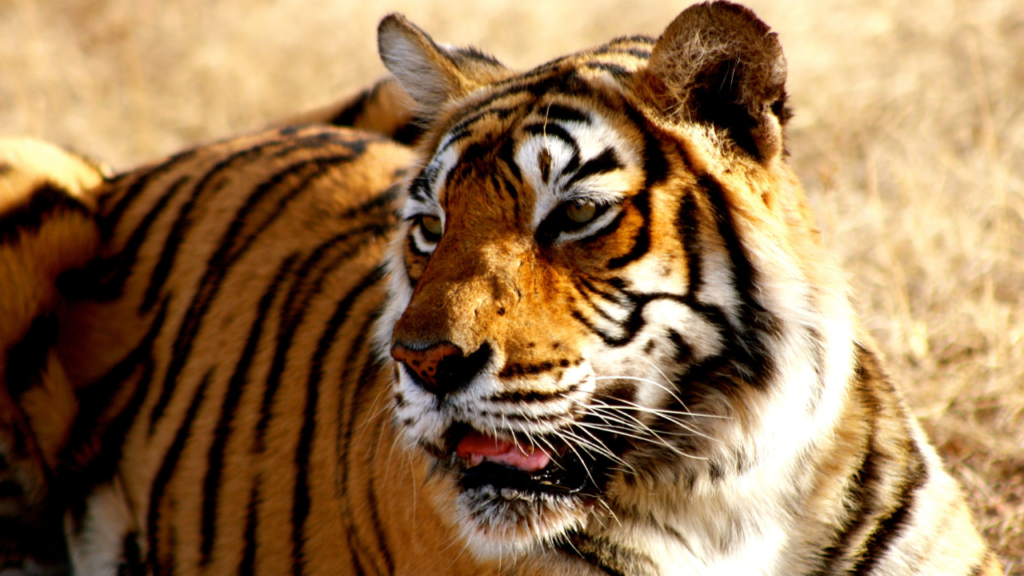



- About India
- India Tourism
- Experiencing the Rich Culture of India
- Top Tourist Places In India
- Collection Of Places In India
- India Travel Essentials
- Frequently Asked Questions For Foreign Visitors To India
- Frequently Asked Questions For India Travel
- What India Feels Like?
- Welcome to The India Travel Guide
- India Travel Gallery

About India
When you think of India, the first thing that comes to mind is its rich history. The country is home to countless ancient temples, forts, and monuments, each with its own story to tell. Nature enthusiasts will also find India fascinating. The country boasts an incredible diversity of landscapes.
The Western Ghats are a UNESCO World Heritage Site, home to many rare species of plants and animals. Food is another highlight of any trip to India. Each state has its own distinct cuisine, and you could spend a lifetime trying to taste it all.
India Tourism
India is a country that’s full of surprises, with each region offering something unique. From the snow-capped peaks of the Himalayas to the sandy shores of Goa, India has something for everyone. Whether you’re a history buff, a nature lover, or someone who just loves food, you’ll find plenty to explore.

A Journey Through the Heart of Incredible India
India, with its rich cultural heritage, diverse landscapes, and vibrant traditions, is a country that captivates the heart of every traveler. From the snow-capped mountains of the Himalayas to the sun-kissed beaches of Goa, India offers a plethora of experiences that cater to all kinds of tourists. Whether you are an adventure enthusiast, a history buff, a nature lover, or someone who simply loves to explore new cultures, India tourism has something special for you.

In this guide, I’ll take you through the various aspects of India tourism, highlighting some of the most popular destinations, cultural experiences, and travel tips to make your journey unforgettable.

The Majestic Indian Himalayas
If you love being surrounded by nature’s beauty and find peace in the mountains, then the Himalayas are just the place for you. Located in northern India, the Himalayas stretch across five states—Jammu and Kashmir, Himachal Pradesh, Uttarakhand, Sikkim, and Arunachal Pradesh. Each one offers its own unique experience.
The Golden Desert of Rajasthan
On the other end of the spectrum, the Thar Desert in Rajasthan offers a completely different experience. Rajasthan is known for its grand palaces, majestic forts, and vibrant culture. Cities like Jaipur, Udaipur, Jodhpur, and Jaisalmer are must-visit destinations in this state.
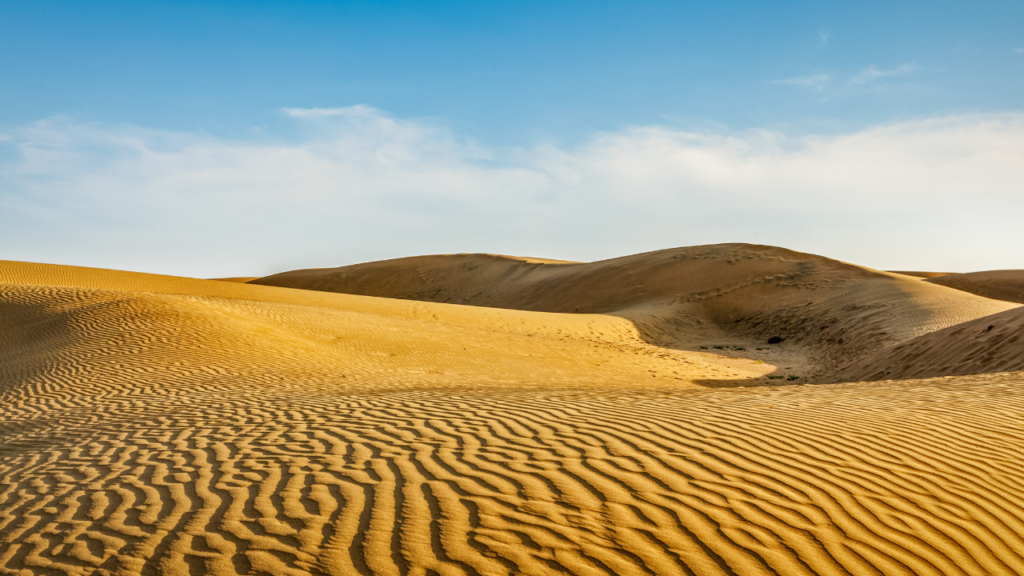

The Green Western Ghats
The Western Ghats, a UNESCO World Heritage site, is a mountain range that runs parallel to the western coast of India. This region is known for its rich biodiversity, tea and coffee plantations, and picturesque hill stations.
The Beautiful Plains of North-India
North India is a region rich in history and culture. The plains of North India are home to some of the most iconic landmarks in the country. They are also rich is fertility and responsible for a lot of harvest throughout the year.


The Sandy Beaches of Goa
No discussion of India tourism is complete without mentioning Goa, the beach capital of India. Goa is known for its golden sandy beaches, vibrant nightlife, and Portuguese-influenced architecture. The northern part of Goa is famous for its lively beaches like Baga, Calangute, and Anjuna.
The Serene Backwaters of Kerala
Kerala, with its serene backwaters, is a destination that offers a peaceful and relaxing experience. The backwaters are a network of interconnected canals, rivers, lakes, and lagoons that run parallel to the Arabian Sea coast. The best way to explore the backwaters is by staying in a traditional houseboat.

Experiencing the Rich Culture of India
It is not incorrect to quote that India is a land of cultures. India’s culture is as diverse as its landscapes. From colorful festivals and delicious cuisine to traditional arts and crafts, there’s so much to explore. Here’s a glimpse into what makes India’s cultural heritage so fascinating:


The Colorful Indian Festivals
India’s festivals are a vivid reflection of its rich cultural heritage, each one bursting with color, joy, and a deep sense of tradition. Festivals like Holi and Diwali are among the most famous. During Holi, also known as the Festival of Colors, people come together to throw vibrant colored powders, dance, and enjoy music, symbolizing the victory of good over evil and the arrival of spring.
The Flavorable Indian Cuisine
Indian cuisine is as diverse and colorful as the country itself, with every region offering its own unique flavors and dishes. In the north, you’ll find rich, hearty meals that are packed with spices such as cumin and coriander. The food here is all about comfort and flavor and creamy curries that are perfect for dipping. As you head south, the flavors get spicier and more vibrant. South Indian food is all about rice, lentils, and coconut.


The Artistic Indian Heritage
India’s heritage is like a beautiful patchwork quilt, stitched together with centuries of stories, traditions, and cultural treasures. Everywhere you look, there’s a piece of the past living on in the present. From the ancient temples that have been places of worship for thousands of years to the majestic forts that once housed kings and queens, India’s history is alive and vibrant.
Top Tourist Places In India
Here, below, you will be going through some of the best tourist destinations of India. There are separate blogs on each sub-headings; feel free to surf through the menus and read about the place that you plan on traveling to next:

Spiti Valley
The Spiti Valley is one of my personal favorite tourist destinations in India which offers you a great Himalayan experience.

Nainital
Nainital in Himachal Pradesh offers you a perfect getaway from your daily routine of the city life. It is really peaceful place.

Yumthang
The Yumthang Valley in Sikkim, or the Valley of Flowers is a great place situated amidst the nature. Sikkim is a great place to travel to.

Bakkhali
Bakkhali is located on the southernmost tip of the state of West Bengal and is guaranteed to give you a great experience of the Bay of Bengal.
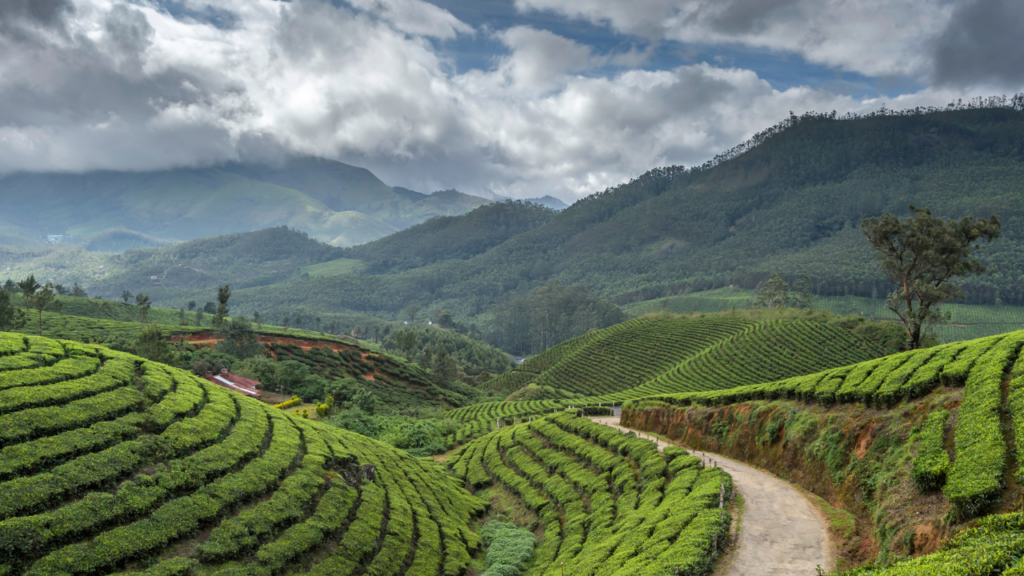
Darjeeling
Darjeeling is rightfully entitled the ‘Queen of the Hills’. There’s something about Darjeeling that makes you stay in the beauty of it and get lost.

Ooty
Ooty is famous for its green valleys and tea plantations. A drive across the Ooty roads feels like a dreamy one. You will definitely fall in love with this place.
Collection Of Places In India
Here below, in this table, you will be going through the collection of some of the best tourist places of India including the mountains, forests, lakes and beaches. There are separate blogs on each sub-headings; feel free to surf through the menus and read about the place that you plan on traveling to next:
- National Parks of India
- Indian Hill Stations
- Festivals In India
- Beaches of India
- Indian Forests
- Lakes of India
- +
National Parks of India
India’s national parks are a treasure trove of natural beauty and biodiversity, offering a glimpse into the country’s rich and varied ecosystems. From the dense forests of Madhya Pradesh to the serene wetlands of Assam, these protected areas serve as sanctuaries for countless species of flora and fauna. Each park is unique, with its own distinct landscape, wildlife, and cultural significance, making them ideal destinations for nature lovers and adventure seekers alike.

Gir National Park
Gir National Park, located in Gujarat, is the last refuge of the Asiatic lion, making it a unique and significant wildlife sanctuary. Spread over an area of about 1,412 square kilometers, Gir is a mix of dry deciduous forests, scrubland, and grassland. The park’s ecosystem supports not only lions but also leopards, hyenas, and a variety of deer species.

Jim Corbett National Park
Jim Corbett National Park, located in Uttarakhand, is India’s oldest national park, established in 1936. Named after the famous British hunter-turned-conservationist Jim Corbett, this park is particularly well-known for its Bengal tigers. Spread across an area of about 520 square kilometers, the park’s terrain varies from dense forests to open grasslands, providing a perfect home for a diverse range of animals.

Kanha Tiger Reserve
Kanha Tiger Reserve, located in Madhya Pradesh, is one of the most famous tiger reserves in India. Spread over a vast area, Kanha is the inspiration behind Rudyard Kipling’s classic novel, The Jungle Book. The park’s landscape is a beautiful mix of dense forests, open meadows, and flowing streams, making it an ideal habitat for a wide variety of wildlife, especially tigers.

Kaziranga National Park
Kaziranga National Park, located in the northeastern state of Assam, is a true wildlife gem. This park is famous worldwide for its population of one-horned rhinoceroses, making it a must-visit for nature enthusiasts. Covering an area of around 430 square kilometers, Kaziranga offers a unique landscape of tall elephant grass, dense forests, and numerous water bodies.

Ranthambore National Park
Ranthambore National Park, located in Rajasthan, is one of the most popular national parks in India, especially for those eager to see Bengal tigers in the wild. Covering an area of around 1,334 square kilometers, Ranthambore’s landscape is a mix of dry deciduous forests, open grasslands, and rocky ridges. The park is also home to the historic Ranthambore Fort, which adds a touch of history to the wilderness.

Sundarban National Park
Sundarban National Park, located in West Bengal, is part of the largest mangrove forest in the world and a UNESCO World Heritage Site. The park is spread over an area of about 1,330 square kilometers and is famous for its unique ecosystem, which is a complex network of tidal waterways, mudflats, and small islands. Sundarban is home to the iconic Royal Bengal tiger, which is known for its ability to swim in the saline waters of the region.
Indian Hill Stations
India is home to some of the most beautiful hill stations in the world, each offering a unique blend of natural beauty, pleasant weather, and rich cultural experiences. From the snow-capped peaks of Himachal Pradesh and Uttarakhand to the lush green valleys of Kerala and Tamil Nadu, these hill stations are perfect escapes from the hustle and bustle of city life. Whether you’re looking for adventure, relaxation, or a bit of both, the hill stations in India have something for everyone. Their cool climate, scenic landscapes, and charming towns make them popular destinations for both locals and tourists alike.

Shillong
Shillong, often called the “Scotland of the East,” is a vibrant hill station in Meghalaya. With its lovely landscapes, waterfalls, and lively local culture, it’s a place full of charm and adventure. You can visit the beautiful Elephant Falls, enjoy a stroll around the lake, or explore the local markets. Shillong is a wonderful place to experience a mix of natural beauty and local flair.
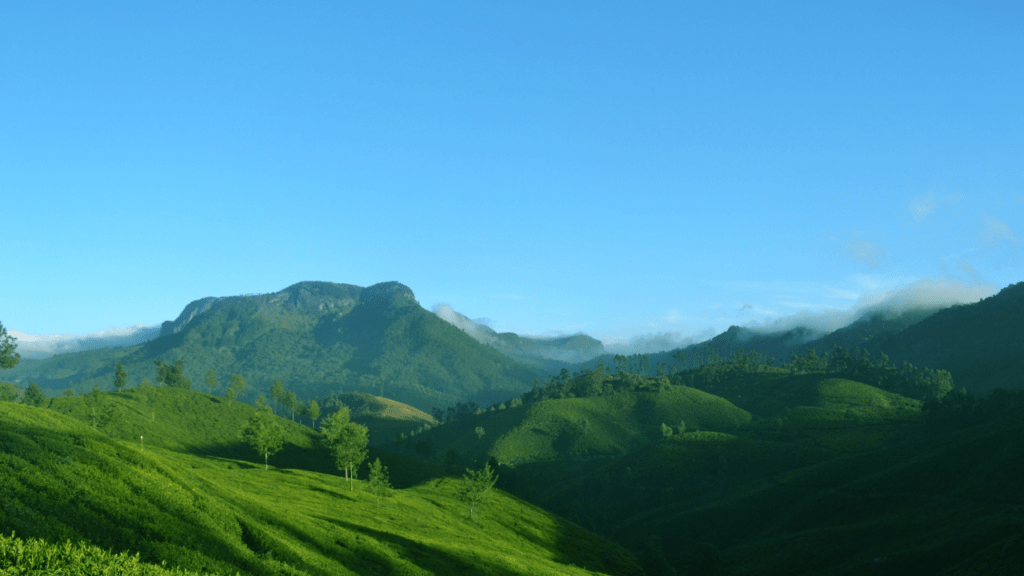
Munnar
Munnar is a beautiful hill station in Kerala, renowned for its vast tea plantations and cool weather. The rolling green tea fields and misty mountains create a peaceful setting where you can relax and take in nature’s beauty. Whether you’re exploring the tea estates or enjoying a trek through the hills, Munnar offers a serene escape into nature.
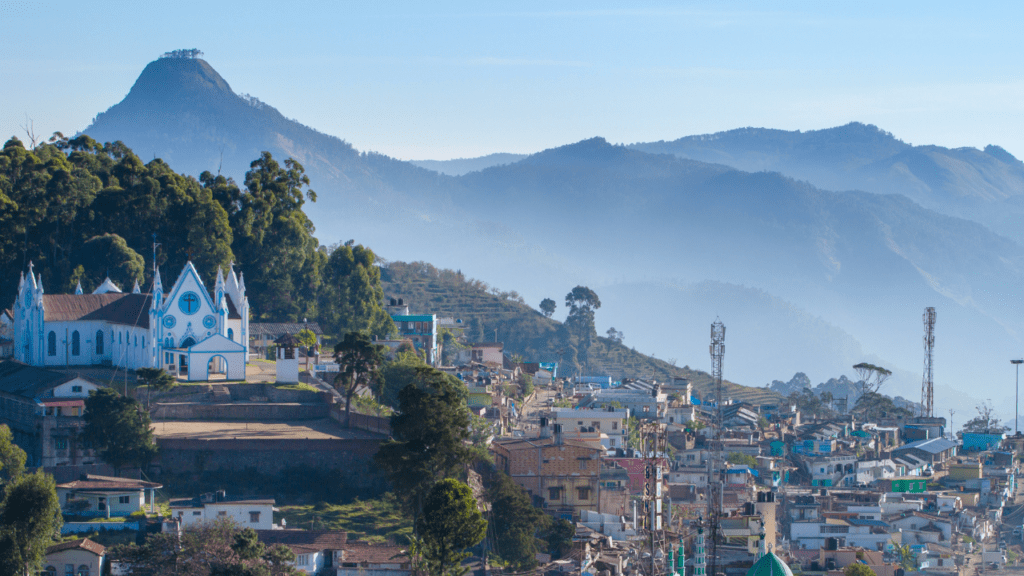
Kodaikanal
Kodaikanal is a charming hill station in Tamil Nadu, often called the “Princess of Hill Stations.” With its cool climate and beautiful lakes, it feels like a refreshing escape from the hustle and bustle of everyday life. You can enjoy a peaceful boat ride on the serene Kodai Lake or take a leisurely walk around the charming town. It’s a perfect spot for anyone looking to relax and take in some lovely views.

Nainital
Nainital is a lovely hill station in Uttarakhand, famous for its beautiful lake, which is shaped like an eye. This charming town offers a mix of relaxing boat rides and lively market streets. You can take a peaceful walk around Naini Lake or visit the hilltop temple for a stunning view of the area. It’s a great place to experience the cool climate and enjoy some time by the water.

Mussoorie
Mussoorie, often known as the “Queen of the Hills,” is a delightful hill station in Uttarakhand. It’s a great place to enjoy cool breezes and stunning views of the surrounding mountains. Strolling along the Mall Road, you’ll find plenty of shops and cafes, while the nearby Kempty Falls offers a fun and refreshing experience. Mussoorie is like a cozy retreat where you can unwind and explore.

Darjeeling
Darjeeling, often referred to as the “Queen of the Hills,” is a fantastic hill station in West Bengal. Known for its famous tea and stunning views of the Himalayas, it’s a place where you can enjoy both relaxation and adventure. A ride on the Darjeeling Himalayan Railway is a must-do, and the views from Tiger Hill are absolutely breathtaking. It’s a spot where you can really soak in the beauty of the mountains.
Festivals of India
India is a land of diverse cultures, and its festivals reflect this rich heritage. Throughout the year, various festivals are celebrated with great enthusiasm across the country, each with its own unique customs and traditions. Diwali, the Festival of Lights, is one of the most widely celebrated, where homes are illuminated with lamps and people exchange sweets and gifts.

Holi
Holi, often called the Festival of Colors, is a joyous celebration that lights up India with vibrant hues. Every spring, people come together to play with colors, dance, and enjoy festive foods. It’s a time when friends and family join in the fun, throwing powders and water at each other, creating a lively and colorful atmosphere. Holi isn’t just about colors; it’s also about spreading happiness and forging closer bonds with loved ones.

Ganesh Chaturthi
Ganesh Chaturthi is a special time in India when people celebrate the birth of Lord Ganesh, the elephant-headed god. The festival is marked by colorful decorations, elaborate statues, and lively processions. Families bring home Ganesh idols, offer prayers, and enjoy sweets like modaks, which are believed to be Ganesh’s favorite. The streets come alive with music and dancing, making Ganesh Chaturthi a vibrant and heartfelt celebration.

Eid
Eid is a significant festival for Muslims around the world, marking the end of Ramadan, a month of fasting. It’s a time of celebration and joy, with families coming together to enjoy special meals, share gifts, and participate in prayers. The day starts with a special Eid prayer, followed by festive gatherings, and delicious dishes like biryani and sweets. Eid is about gratitude, community, and spreading joy among loved ones.

Pongal
Pongal is a lively harvest festival celebrated mainly in Tamil Nadu. It’s a time to give thanks for the year’s crops and enjoy a feast of traditional foods, including the special Pongal dish made from rice and milk. The festival is marked by colorful kolam designs drawn on the ground, traditional music, and dance. It’s a joyful occasion for families to come together and celebrate the abundance of harvest with gratitude and fun.

Bihu
Bihu is the vibrant festival celebrated in Assam, marking the Assamese New Year and the harvest season. It’s a time of great joy and celebration, with lively dance performances, traditional music, and delicious food. People wear traditional attire, perform folk dances like Bihu dance, and enjoy the festive spirit. Bihu brings together communities to celebrate the harvest and the start of a new year with cheer and unity.

Diwali
Diwali, also known as the Festival of Lights, is one of India’s most cherished festivals. It’s a time when homes are decorated with lamps, candles, and colorful rangoli designs. Families come together to light fireworks, exchange gifts, and enjoy delicious sweets. Diwali celebrates the victory of light over darkness and good over evil, creating a warm and festive atmosphere that brightens up the whole country.
Beaches of India
India is blessed with a stunning coastline that stretches over 7,500 kilometers, offering a wide variety of beautiful beaches. From the lively shores of Goa to the serene sands of Kerala, Indian beaches are perfect for relaxation and adventure alike. Goa’s beaches, like Baga and Anjuna, are famous for their vibrant nightlife and water sports, while the beaches of Kerala, such as Varkala and Kovalam, are known for their tranquil beauty and picturesque sunsets. The beaches in the Andaman and Nicobar Islands, like Radhanagar Beach, are a paradise for those seeking crystal-clear waters.

Minicoy Thundi Beach
Minicoy Thundi Beach is a hidden gem in the Lakshadweep Islands. With its soft white sands and clear blue waters, it’s the perfect spot for a relaxing day by the sea. You can enjoy the calm waves, take a leisurely walk along the shore, or simply soak up the sun in this peaceful paradise. It’s a great place to escape the hustle and bustle of daily life and enjoy nature’s beauty.

Radhanagar Beach
Radhanagar Sea Beach, located on Havelock Island in the Andaman and Nicobar Islands, is a must-visit for beach lovers. Known for its stunning sunset views and clean, sandy shores, this beach offers a perfect blend of relaxation and natural beauty. You can take a refreshing swim, walk along the shoreline, or just sit back and enjoy the incredible views as the sun dips below the horizon.

Kovalam Beach
Kovalam Beach in Kerala is famous for its beautiful coastline and lively atmosphere. It’s a great place to enjoy the sun, sea, and sand, with plenty of activities and delicious seafood to try. Whether you want to take a dip in the warm waters, get a relaxing massage, or just stroll along the beach, Kovalam offers something for everyone.

Bakkhali Sea Beach
Bakkhali Sea Beach in West Bengal is a charming spot for a quiet getaway. With its wide, sandy stretches and gentle waves, it’s a great place for a peaceful walk or a relaxing day under the sun. The beach is less crowded, making it an ideal place to enjoy the simplicity of nature and have some quality time away from the crowds.

Puri Sea beach
Puri Beach in Odisha is a vibrant and lively spot, known for its golden sands and bustling atmosphere. It’s a popular destination for both tourists and locals, offering a range of activities from beach sports to enjoying local snacks. The beach is also close to the famous Jagannath Temple, making it a great place to experience local culture and have some fun by the sea.

Shivrajpur Beach
Shivrajpur Beach in Gujarat is a beautiful and less-visited destination that’s perfect for a peaceful day at the beach. With its clean sands and clear waters, it’s a great spot for swimming, picnicking, or just relaxing and enjoying the calm surroundings. It’s a hidden treasure for those looking to escape the usual tourist spots and enjoy some tranquility by the sea.
Indian Forests
India’s forests are a treasure trove of biodiversity, home to a wide range of flora and fauna that are both unique and fascinating. From the dense jungles of the Western Ghats to the sprawling Sundarbans mangroves, these forests are vital ecosystems that support countless species, including tigers, elephants, and rare birds.

Bhitarkanika Mangroves
Bhitarkanika Mangroves, located in Odisha, India, is a lush and vibrant mangrove ecosystem that teems with life. This unique wetland is home to one of the largest populations of saltwater crocodiles in India, making it a thrilling destination for wildlife enthusiasts. The mangroves also serve as a crucial nesting ground for the endangered olive ridley turtles at the nearby Gahirmatha Beach.

Chambal Sanctuary
Chambal National Sanctuary is a haven for some of India’s most endangered species. This sanctuary is renowned for its efforts to protect the critically endangered gharial, a unique long-snouted crocodile, as well as the elusive Gangetic dolphin. The Chambal River, with its pristine waters and rugged ravines, provides a stunning backdrop for spotting a variety of wildlife, including turtles, otters, and numerous bird species.

Dooars Forest
The Dooars Forests, situated in the foothills of the eastern Himalayas, are a lush expanse of greenery that stretches across the Indian states of West Bengal and Assam. Known for their rich biodiversity, these forests are home to a variety of wildlife, including elephants, rhinos, and tigers. The region’s name, “Dooars,” means “doors” in Assamese, aptly describing its role as the gateway to Bhutan.

Gorumara Forest
Gorumara Forest, located in the Dooars region of West Bengal, is a picturesque national park known for its vibrant wildlife and scenic beauty. The park is famous for its population of Indian rhinoceros, which can often be seen grazing in the grasslands. Gorumara’s diverse habitats, ranging from forests to rivers, support a wide array of species, including elephants, deer, and numerous bird species.

Molai Forest – Majuli
Molai Forest, situated on the island of Majuli in Assam, is a remarkable testament to the power of individual dedication to conservation. This man-made forest was created by Jadav “Molai” Payeng, who single-handedly planted and nurtured it over several decades. Today, Molai Forest is a thriving ecosystem that provides habitat for a variety of wildlife, including elephants, tigers, and deer. The forest stands as a symbol of hope and resilience, showcasing the profound impact one person can have on the environment.

Nilgiri Biosphere Reserve
The Nilgiri Biosphere Reserve, sprawling across the Western Ghats in South India, is a treasure trove of biodiversity. The reserve’s diverse landscapes range from tropical rainforests to montane grasslands, offering a sanctuary for countless species. As India’s first biosphere reserve, the Nilgiri Biosphere Reserve is a vital area for conservation, providing a glimpse into the natural beauty and ecological significance of the Western Ghats.
Great Indian Lakes
India’s lakes are like natural jewels scattered across the country, each with its own unique charm. Take Dal Lake in Srinagar, for instance—it’s famous for its serene houseboats and the stunning mountains that frame it, making it a must-visit spot in Jammu and Kashmir. In Rajasthan, Lake Pichola in Udaipur is not just a lake but a beautiful setting surrounded by grand palaces and gardens, giving it a magical feel. Down south, Kerala’s Vembanad Lake is a hub for peaceful houseboat cruises, letting you drift through lush landscapes at a leisurely pace.

Roop Kund Lake
Roopkund is a mysterious glacial lake located in the Chamoli district of Uttarakhand. Known as “Skeleton Lake,” it is famous for the hundreds of ancient human skeletons found at its edge, dating back to the 9th century. Situated at an altitude of about 16,470 feet, Roopkund is surrounded by snow-covered mountains and green meadows.

Vembanad Lake
Vembanad Lake, the largest lake in Kerala, is a sprawling expanse of water that stretches across several districts. Known for its backwaters, the lake is a hub of Kerala’s tourism, with houseboats offering leisurely cruises through its serene waters. Vembanad Lake is also home to Pathiramanal Island, a secluded paradise accessible only by boat.

Chandra taal Lake
Chandra Taal, also known as the “Moon Lake,” is a stunning crescent-shaped lake situated in the Spiti Valley of Himachal Pradesh. Perched at an altitude of around 14,100 feet, the lake is a hidden gem amidst the barren beauty of the region. Its turquoise waters stand in stark contrast to the arid surroundings, making it a captivating sight. The lake is a popular destination for trekkers.

Dal lake
Dal Lake, located in Srinagar, Kashmir, is an iconic urban lake renowned for its beauty and cultural significance. Often referred to as the “Jewel in the Crown of Kashmir,” the lake is surrounded by Mughal-era gardens, parks, and traditional houseboats. A shikara ride on Dal Lake is a quintessential experience, offering views of floating gardens and the vibrant life on the water.

Gurudongmar Lake
Gurudongmar Lake is a breathtaking high-altitude lake located in the Indian state of Sikkim. Nestled at an elevation of about 17,800 feet, it is one of the highest lakes in the world. The lake is surrounded by snow-capped peaks and is revered as a sacred site by both Buddhists and Sikhs. Its crystal-clear waters reflect the surrounding mountains, creating a serene and mystical atmosphere.

Nainital Lake
Nainital Lake is a freshwater lake situated in the town of Nainital, Uttarakhand. Shaped like a crescent, the lake is a popular destination for tourists seeking tranquility and natural beauty. Surrounded by verdant hills, the lake offers opportunities for leisurely boat rides and peaceful walks along its promenade.
Collection Of Tourist Destinations In India
- National Parks In India
- UNESCO Sites In India
- Religious Places In India
- Trains In India
- Palaces In India
- Airports In India
- Street Food In India
- Historical Places In India
- Honeymoon Places In India
India Travel Guide
India Travel Essentials
When traveling to India, it’s essential to be well-prepared with the right documents, health precautions, and clothing. Make sure your passport is valid, apply for a visa in advance, and carry photocopies of important documents. Packing light, breathable clothing, and comfortable footwear will help you cope with India’s diverse climate. Health essentials like vaccinations, a first aid kit, and water purification methods are also crucial for a safe trip. Don’t forget a universal adapter and a local SIM card to stay connected.

Cultural sensitivity is key, so dressing modestly and learning a few basic Hindi phrases can enhance your experience. Carry some local currency, and consider using credit cards in major cities. Safety is important, so comprehensive travel insurance and personal security awareness are recommended. Other useful items include toiletries, a reusable bag, and a travel pillow for long journeys. For more information on India Travel Essentials, refer to the blogs on my website.
India Travel Gallery
Here are some images that are surely going to make you fall in love with the rawness and the beauty of India and make your India travel, even more engaging and fun.
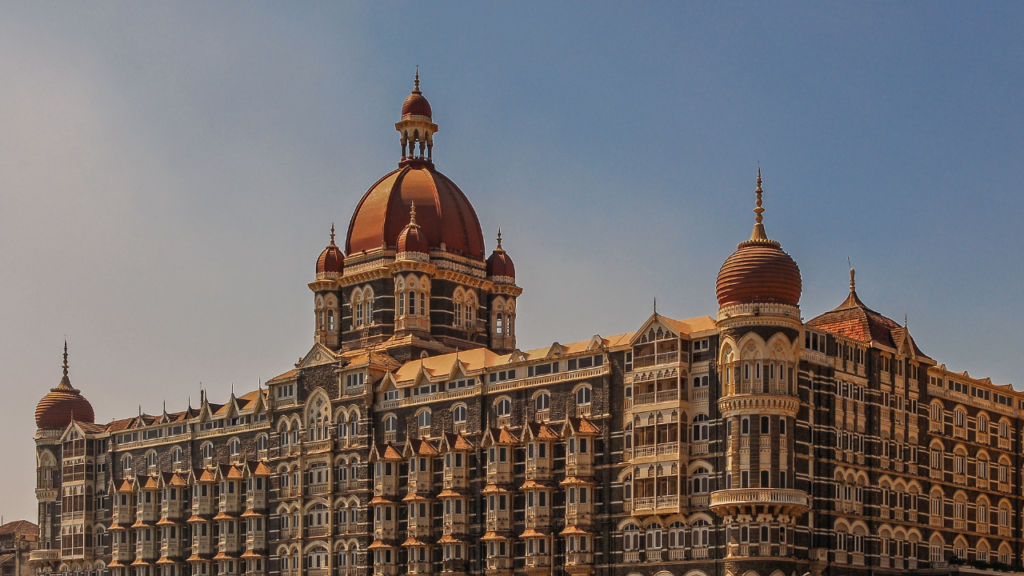
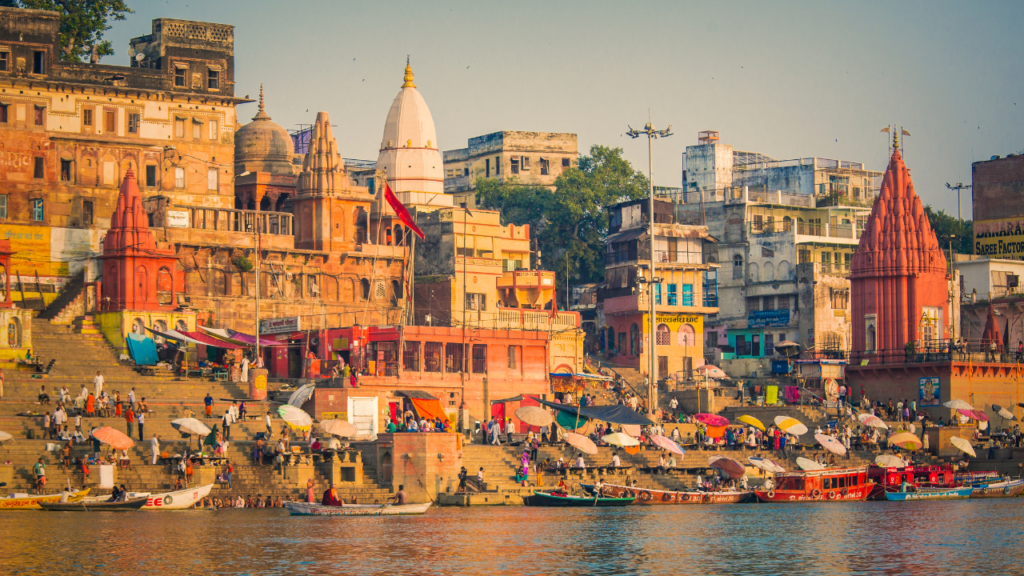


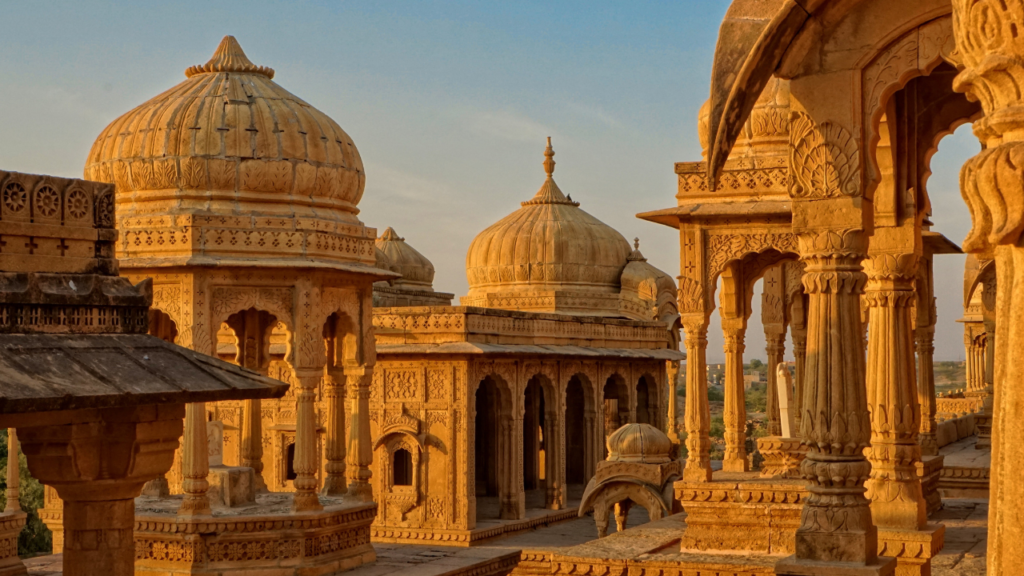
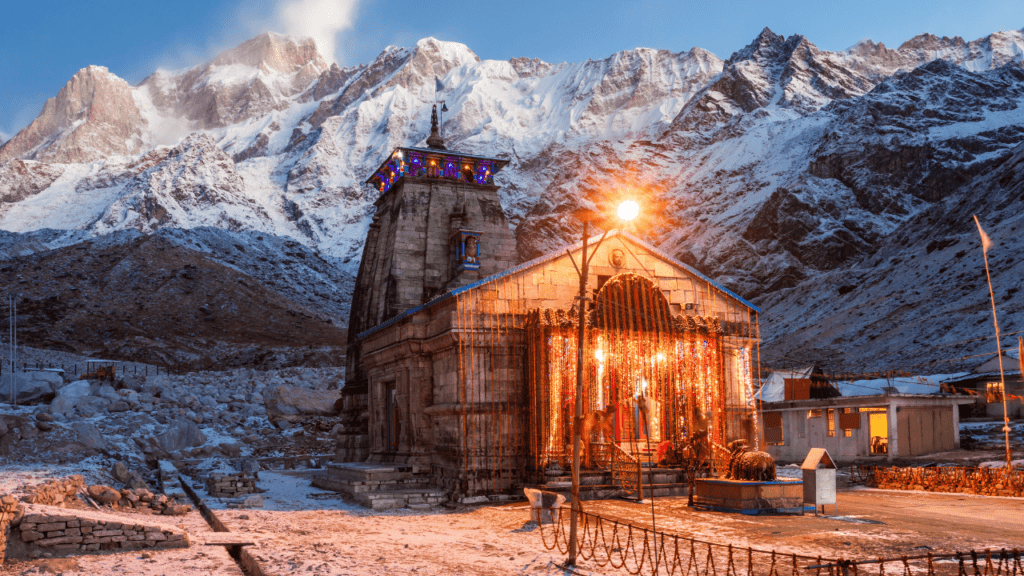

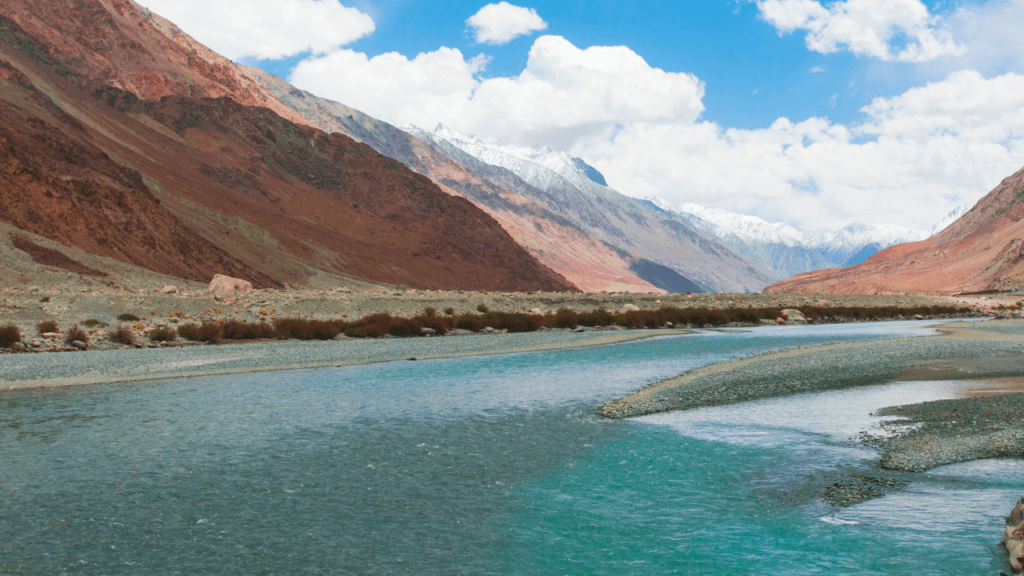

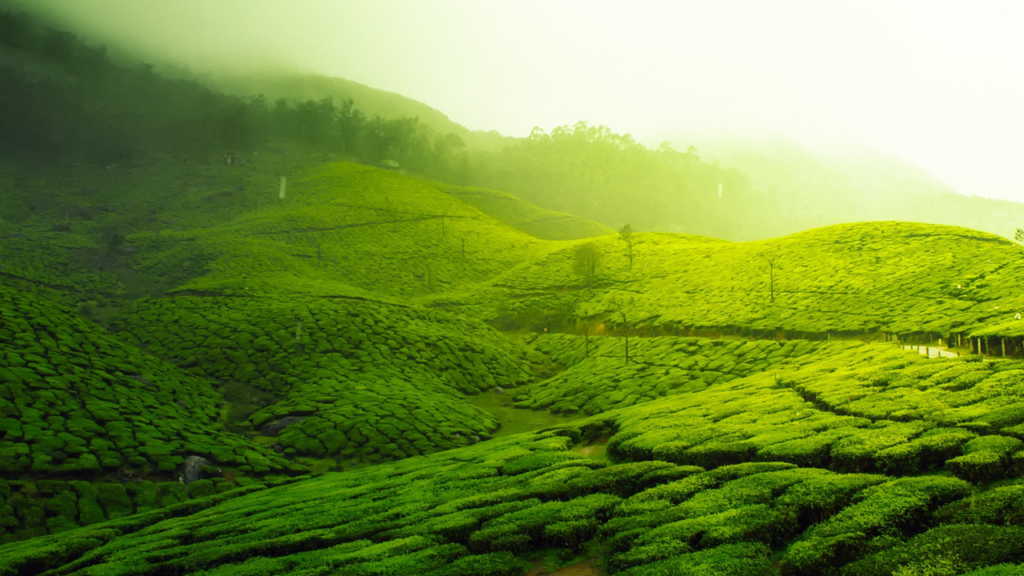
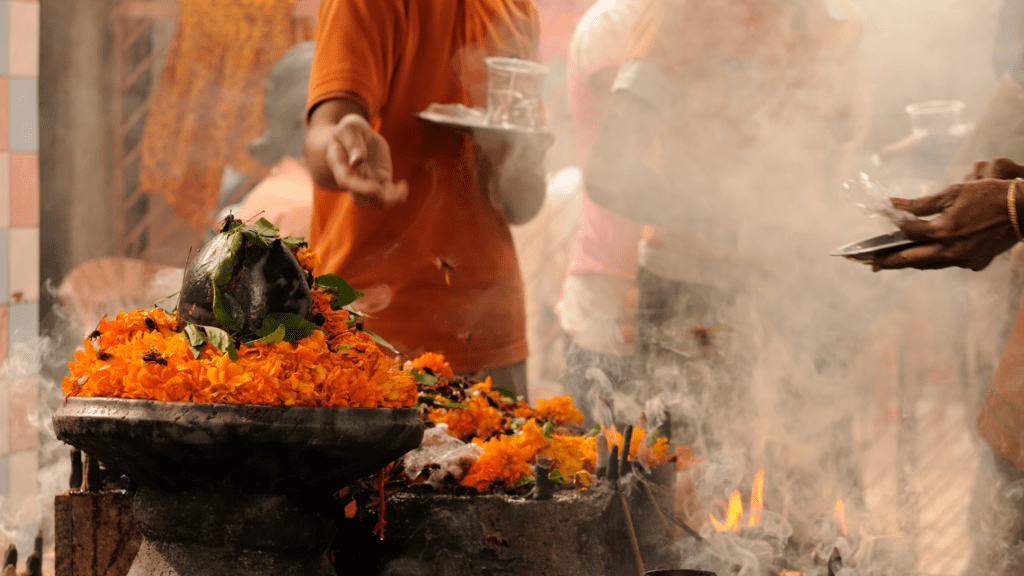

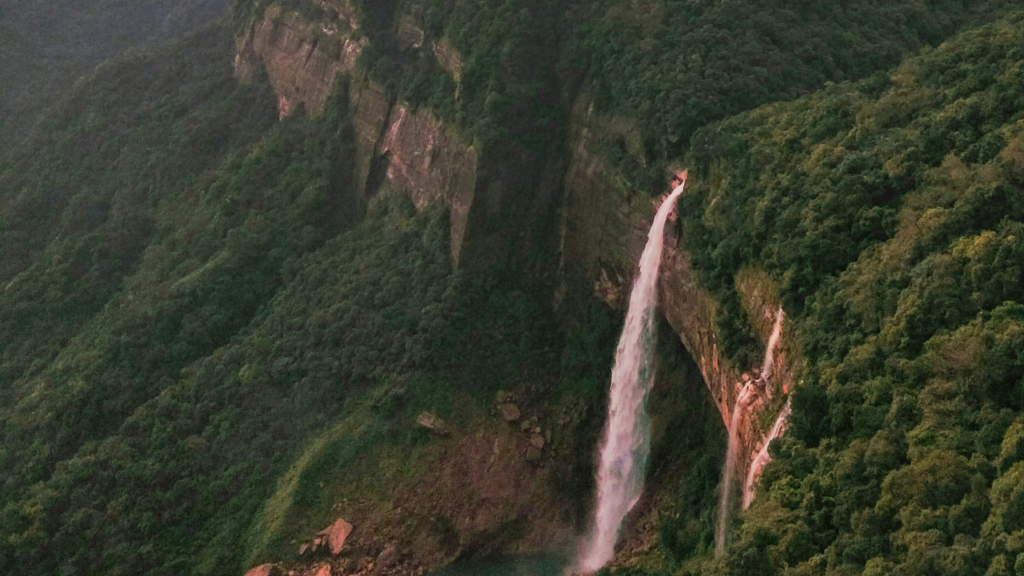

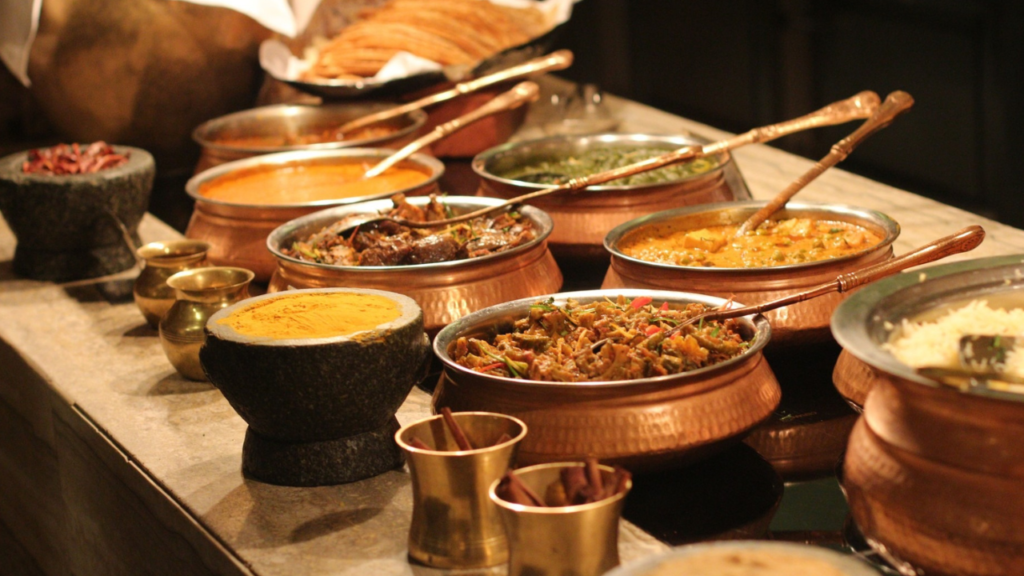

India Travel Guide
Frequently Asked Questions For Foreign Visitors To India
Are you planning a trip in India and have a lot of questions in your mind? Find all the answers here!
Do I Need a Visa to Travel to India?
Yes, most foreign travelers require a visa to enter India. You can apply for an e-visa online, which is available in three options: 30 days, one year, and five years. The application process is straightforward, requiring personal details, a passport-style photograph, and sometimes details about previous travel.
It’s recommended to apply at least four days before your travel date, and processing usually takes up to 72 hours. Depending on your nationality, the cost varies, with fees being lower during off-peak seasons (April to June).
When Is the Best Time to Visit India?
The best time to visit India is generally from October to March, when the weather is cooler, dry, and more comfortable for exploring. This period is ideal for visiting popular destinations like Delhi, Agra, and Rajasthan. However, India is a diverse country with different climates.
If you’re interested in experiencing the landscapes of Kerala or the hill stations in the Himalayas, visiting during the monsoon season (June to September) can also be rewarding, though it’s less conventional.
Is India Safe for Tourists?
India is generally safe for tourists, but like any travel destination, it’s important to stay vigilant. Major tourist areas are usually safe, but petty crimes like pickpocketing can occur, especially in crowded places.
It’s advisable to avoid remote areas at night, stay in well-reviewed accommodations, and use reputable transportation options. The northern region of Jammu & Kashmir, and certain areas near the India-Pakistan border, are often advised against due to political tensions.
What Vaccinations Are Required for Traveling to India?
While no vaccinations are legally required to enter India, it’s recommended to be up to date on routine vaccines such as MMR (measles, mumps, and rubella), diphtheria-tetanus-pertussis, varicella (chickenpox), polio, and your yearly flu shot. Additional vaccines to consider include hepatitis A, typhoid, and, depending on your itinerary, hepatitis B, Japanese encephalitis, and rabies. It’s best to consult with a travel clinic before your trip.
How Should I Handle Money in India?
India operates primarily in cash, especially in rural areas, though credit and debit cards are widely accepted in cities and tourist spots. It’s advisable to carry Indian rupees, which you can exchange at the airport, banks, or currency exchange counters.
ATMs are common in cities but may be scarce in remote areas, so plan accordingly. Be cautious when handling money in public and avoid exchanging large amounts of cash at once.
Is the Water Safe to Drink in India?
Tap water in India is generally not safe for drinking. It’s recommended to drink bottled water, which is widely available, or to use water purification tablets or a portable water filter. Make sure the seal on bottled water is intact before purchasing. Additionally, avoid ice in drinks, as it may be made from tap water.
What Should I Wear When Traveling in India?
India has diverse climates and cultural norms, so it’s important to dress appropriately. Light, breathable clothing is recommended for most parts of the country, especially during the summer.
In conservative regions and religious sites, it’s best to dress modestly, covering shoulders and knees. In the mountains or during the winter, warm clothing is essential. Comfortable shoes are a must, as you’ll likely be doing a lot of walking.
How Can I Stay Connected in India?
Staying connected in India is relatively easy, with a wide range of mobile networks offering good coverage across the country. Purchasing a local SIM card is recommended for affordable data and call rates. You can buy a SIM card at the airport or in major cities with a copy of your passport and a passport-sized photo. Wi-Fi is also widely available in hotels, cafes, and restaurants.
What Are the Language Barriers in India?
India is a multilingual country with 22 official languages and many more dialects. Hindi is widely spoken, especially in the northern regions, but English is also commonly used in business, tourism, and education. In tourist areas, you’ll generally find that English is spoken or understood, though learning a few basic phrases in Hindi or the local language can enhance your experience.
How Can I Avoid Scams in India?
Scams targeting tourists can happen, particularly in popular tourist areas. Common scams include overcharging for taxi fares, being taken to shops by drivers who receive a commission, and fake tour guides offering their services.
To avoid these, always agree on a price before getting into a taxi or auto-rickshaw, use licensed guides, and book tours through reputable companies. If something seems too good to be true, it probably is.
Is It Necessary to Tip in India?
Tipping is not mandatory in India, but it is appreciated in many service industries. In restaurants, a tip of 10% of the bill is customary if service charges are not included. For hotel staff, tipping a small amount to the bellboy or housekeeping staff is common. In taxis and auto-rickshaws, rounding up the fare or leaving a small tip is polite but not required.
Can I Travel Alone in India?
Yes, many people travel alone in India and have wonderful experiences. However, solo travelers, especially women, should take extra precautions. Stick to well-traveled areas, avoid isolated places at night, and choose accommodations that are highly rated for safety. Trust your instincts and be cautious when interacting with strangers. Joining group tours or staying in hostels can be a great way to meet other travelers.
How Do I Stay Healthy While Traveling in India?
Staying healthy in India involves being mindful of your food and water intake, staying hydrated, and protecting yourself from the sun. Avoid drinking tap water and opt for bottled or filtered water.
Eat at reputable restaurants and avoid street food if you have a sensitive stomach. Carry sunscreen, insect repellent, and a hat to protect yourself from the sun, especially during the hotter months. It’s also a good idea to take probiotics before and during your trip to maintain gut health.
What Is the Food Like in India?
Indian cuisine is incredibly diverse, with each region offering its own specialties. From the spicy curries of Punjab to the coconut-based dishes of Kerala, there’s something for everyone. Street food is also a big part of the Indian food.
Each region in India has its own culinary specialties, reflecting the local culture, climate, and history. For instance, in the north, you’ll find creamy curries, tandoori dishes, and bread like naan and roti.
The south offers spicy curries, rice-based dishes, and coconut-infused flavors. Street food is a major part of Indian cuisine, with snacks like samosas, chaat, and vada pav being popular in different regions. While the food is generally safe, it’s recommended to eat at places that are busy and have a good reputation to avoid any stomach issues.
What Are the Must-Visit Destinations in India?
India is home to many iconic destinations. Some of the must-visit places include the Taj Mahal in Agra, Jaipur’s forts and palaces, the backwaters of Kerala, the beaches of Goa, and the streets of Mumbai.
For a spiritual experience, Varanasi on the banks of the Ganges River is unparalleled. If you’re interested in natural beauty, the Himalayas offer stunning landscapes, and the Thar Desert in Rajasthan is perfect for a desert adventure.
What Are the Health Precautions I Should Take While Traveling to India?
It’s important to take certain health precautions when traveling in India. Drink only bottled or purified water, eat food that is cooked and served hot, and avoid raw fruits and vegetables unless you can peel them yourself. Carry a basic medical kit with you, including medicines for common ailments like diarrhea, headaches, and colds. If you take prescription medication, bring enough for the duration of your trip, as finding specific medications might be challenging.
What Are the Cultural Norms I Should Be Aware of?
India is a country with rich cultural traditions, and it’s important to respect local customs. When visiting temples or religious sites, dress modestly, remove your shoes, and be respectful of worshippers. Public displays of affection are frowned upon in many areas, and it’s polite to greet people with a “Namaste” rather than a handshake. Be mindful of using your right hand for eating and giving or receiving items, as the left hand is considered unclean in traditional customs.
Can I Use My Credit/Debit Card in India?
Credit and debit cards are widely accepted in major cities, hotels, restaurants, and shops. Visa and Mastercard are the most commonly accepted, while American Express and Discover may not be as widely recognized. It’s advisable to carry some cash for smaller transactions or in rural areas where card facilities might not be available. Be sure to notify your bank of your travel plans to avoid your card being blocked.
How Do I Get Around in India?
India offers a variety of transportation options, from taxis and auto-rickshaws to buses and trains. For long distances, trains are a popular and scenic choice, though they can be crowded. Booking in advance is recommended.
Domestic flights are also widely available and can save time. In cities, ride-hailing apps like Uber and Ola are convenient and safe options. For local experiences, auto-rickshaws and cycle rickshaws are fun, but it’s important to agree on a fare beforehand.
Is It Safe to Eat Street Food in India?
Street food is a big part of India’s culinary culture, but it’s important to be cautious. To avoid foodborne illnesses, eat at stalls that are popular with locals, where the food is freshly prepared and served hot. Avoid raw or uncooked items, and be wary of foods that may have been sitting out for a while. It’s also wise to carry hand sanitizer and wash your hands before eating.
India Travel Guide
Frequently Asked Questions For India Travel
Are you planning a trip in India and have a lot of questions in your mind? Find all the answers here!
What are the best months to travel in India?
The best time to travel in India largely depends on the region you plan to visit. For most parts of the country, October to March is ideal because the weather is cooler and more pleasant. This period is perfect for exploring the northern plains, Rajasthan, and popular tourist cities like Delhi, Agra, and Jaipur.
However, if you’re planning to visit the hill stations in the Himalayas, the summer months from April to June are more suitable. For southern India, the winter months are also ideal, while monsoon season (June to September) offers a unique experience, especially in Kerala and Goa, with lush greenery and fewer crowds.
What documents do I need for domestic travel in India?
For domestic travel in India, you must carry a government-issued photo ID, such as an Aadhaar card, voter ID, or passport. This ID is essential for checking into hotels and boarding flights or trains. If you’re flying, make sure your name on the ticket matches the one on your ID.
Additionally, with the rise of digital platforms, having a soft copy of your travel documents on your smartphone can be helpful. Keep your travel itinerary, hotel bookings, and e-tickets easily accessible to avoid any last-minute hassles.
What are some must-visit places in India?
India is a vast country with countless must-visit destinations, each offering a unique experience. The Taj Mahal in Agra, Jaipur’s palaces, and Varanasi’s ghats are iconic for their historical and cultural significance. In the south, Kerala’s backwaters and Tamil Nadu’s temples are a must-see.
For nature lovers, the Himalayan hill stations like Manali and Darjeeling, and the deserts of Rajasthan offer stunning landscapes. Meanwhile, Goa’s beaches and the Andaman Islands provide the perfect beach getaway. Each region has something special, so your itinerary can be as diverse as India itself!
Is it safe for solo travelers to explore India?
India is generally safe for solo travelers, including women, but it’s important to stay cautious and aware of your surroundings. Major tourist areas are well-patrolled, and locals are usually friendly and helpful. However, sticking to well-populated areas, especially at night, is advisable.
It’s also a good idea to research your destinations thoroughly, book reputable accommodations, and use trusted transportation options. Keep family or friends informed of your itinerary, and always have a backup plan in case of emergencies. With the right precautions, solo travel in India can be a rewarding experience.
How should I dress when traveling in India?
Dressing modestly is generally recommended when traveling in India, especially in rural areas and religious sites. Women should consider wearing clothes that cover their shoulders and knees, while men should avoid shorts in such settings. This shows respect for local customs and makes you feel more comfortable.
In cities and tourist areas, the dress code is more relaxed, and you can wear whatever you feel comfortable in. However, lightweight, breathable fabrics like cotton are ideal for dealing with India’s often hot and humid climate. Carrying a scarf or shawl is also useful for both sun protection and modesty.
What are the best ways to travel within India?
India offers a variety of transportation options to suit different budgets and preferences. Trains are one of the most popular ways to travel long distances, offering an extensive network that connects major cities and remote areas. For shorter trips or more comfort, domestic flights are quick and convenient.
Buses, both government-run and private, are another affordable option, especially for intercity travel. In cities, auto-rickshaws, taxis, and app-based ride services like Uber and Ola are widely available. Renting a car is also an option, though it’s best to hire a driver due to challenging driving conditions in some areas.
Do I need vaccinations before traveling in India?
It’s recommended to get certain vaccinations before traveling to India, especially if you plan to visit rural areas or stay for an extended period. Commonly recommended vaccines include Hepatitis A and B, Typhoid, and Tetanus. Depending on the region and activities, your doctor might also suggest Malaria prophylaxis or a rabies vaccine.
Consult your healthcare provider at least six weeks before your trip to discuss the necessary vaccinations based on your travel itinerary. Additionally, carrying a basic first aid kit with medicines for common ailments like stomach upsets and allergies can help you stay healthy during your travels.
What are some essential apps for traveling in India?
Having the right apps can make your travel in India much smoother. Google Maps is essential for navigation, while Zomato and Swiggy are great for finding and ordering food from local restaurants. MakeMyTrip or Goibibo can help with booking hotels, flights, and trains.
For transport within cities, Uber and Ola are widely used for cabs, and IRCTC is the official app for booking train tickets. Paytm is useful for cashless payments, and RedBus is handy for booking bus tickets. These apps will help you manage logistics, stay connected, and explore India with ease.
What should I know about Indian cuisine before traveling?
Indian cuisine is incredibly diverse, with each region offering its unique flavors and dishes. The north is known for its rich curries and bread, while the south specializes in rice-based dishes and coconut-infused flavors. Street food is a must-try, with options like samosas, chaat, and dosas being popular across the country.
If you’re new to Indian food, it’s best to start with mild dishes and gradually explore spicier options. Be cautious with street food, and opt for vendors that are busy and have a good reputation to avoid any stomach issues. Enjoy the diversity, but always listen to your body and choose what suits your palate.
How can I stay safe while traveling in India?
Staying safe in India involves being aware of your surroundings and taking common-sense precautions. Keep your valuables secure, especially in crowded areas like markets and train stations. Avoid walking alone at night in unfamiliar places, and be cautious when accepting help from strangers.
It’s also wise to stay updated on local news and travel advisories, especially in politically sensitive areas. Using registered taxis or ride-sharing apps for transportation and choosing reputable accommodations can also enhance your safety. With these precautions, you can enjoy your trip without unnecessary worries.
Is it easy to get around India as a non-Hindi speaker?
Yes, it’s quite easy to get around India even if you don’t speak Hindi. English is widely spoken, especially in cities and tourist areas, and is commonly used in business, government, and travel services. Signage in English is also prevalent at airports, railway stations, and major attractions.
However, learning a few basic Hindi phrases can be helpful, especially in more remote areas. Most Indians are friendly and will do their best to help you, even if there’s a language barrier. With a bit of patience and some language tools on your phone, you should have no trouble navigating the country.
What is the local currency in India, and how should I manage money?
The local currency in India is the Indian Rupee (INR). It’s advisable to carry some cash, especially when traveling to rural areas where card payments may not be accepted. ATMs are widely available in cities, but it’s good to withdraw enough cash before heading to more remote areas.
Credit and debit cards are accepted in most hotels, restaurants, and shops in major cities. For convenience, you might also consider using mobile payment apps like Paytm, which are widely used across India. Always inform your bank of your travel plans to avoid any issues with card transactions.
What are the best shopping destinations in India?
India is a shopper’s paradise, offering a wide range of products from traditional handicrafts to modern fashion. Delhi’s Chandni Chowk and Dilli Haat are famous for textiles, jewelry, and souvenirs. Mumbai’s Colaba Causeway and Zaveri Bazaar are great for street shopping and jewelry.
In Rajasthan, Jaipur’s bazaars are known for gemstones, pottery, and vibrant textiles. For a more unique experience, visit the markets in Kerala for spices and tea or explore the craft villages in Gujarat for traditional handicrafts. Don’t forget to bargain, as it’s a common practice in most markets!
How can I book train tickets in India?
Booking train tickets in India is quite easy, thanks to the Indian Railways’ online portal, IRCTC. You can register on the IRCTC website or use the IRCTC app to book tickets. Alternatively, third-party apps like MakeMyTrip and Cleartrip also offer train booking services.
It’s advisable to book your tickets well in advance, especially for popular routes, as trains can fill up quickly. If you’re traveling last minute, you can try for Tatkal tickets, which are a limited number of tickets released a day before the journey, but they sell out fast, so be quick!
What should I pack for a trip to the Himalayas?
Packing for a trip to the Himalayas requires careful consideration due to the region’s varying climate. Essentials include warm clothing, such as thermal wear, a good quality jacket, gloves, and a beanie. Even during summer, nights can be chilly, so layers are key.
Don’t forget sturdy trekking shoes, sunscreen, sunglasses, and a good backpack. A first aid kit, water bottles, and energy snacks are also important, especially if you plan to hike. Lastly, carrying some cash is advisable, as ATMs are scarce in remote areas.
What are the best hill stations to visit in India?
India boasts numerous beautiful hill stations, each offering a unique experience. In the north, destinations like Shimla, Manali, and Mussoorie in Himachal Pradesh are extremely popular. Darjeeling in West Bengal is famous for its tea gardens and stunning views of the Kanchenjunga.
In the south, Ooty and Munnar are well-loved for their lush greenery and pleasant weather. If you’re looking for less crowded spots, places like Coorg in Karnataka and Auli in Uttarakhand offer a peaceful retreat. Each hill station has its charm, so you can choose based on your preferences.
What are some lesser-known destinations in India worth visiting?
While popular tourist spots like Agra and Jaipur are must-visits, India also has many lesser-known gems. For example, Hampi in Karnataka is a UNESCO World Heritage site with ancient ruins that are both stunning and less crowded. Gokarna, also in Karnataka, offers beautiful beaches and a laid-back vibe, similar to Goa but without the crowds.
In the northeast, Tawang in Arunachal Pradesh is a hidden gem with its serene monasteries and breathtaking landscapes. Ziro Valley, also in Arunachal, is perfect for nature lovers and those looking to experience tribal culture. These offbeat destinations provide a unique and tranquil experience away from the typical tourist trail.
What is the food culture like in different regions of India?
India’s food culture is as diverse as its geography, with each region offering a distinct culinary experience. In the north, you’ll find hearty dishes like butter chicken, kebabs, and various bread like naan and roti. The south is famous for its rice-based dishes, such as dosas, idlis, and coconut-rich curries.
In the west, Maharashtra offers spicy curries and street food like vada pav, while Gujarat is known for its vegetarian thalis. The east has a distinct flavor profile with dishes like fish curry and momos, especially in Bengal and the northeastern states. Exploring local food is a must for any traveler in India.
How do I plan a budget trip in India?
Planning a budget trip in India is entirely possible with a bit of research and flexibility. Start by choosing budget accommodations, such as hostels, guesthouses, or homestays, which are widely available across the country. Booking trains or buses instead of flights can significantly reduce travel costs.
Eating at local dhabas or street food stalls instead of high-end restaurants will also save you money while giving you an authentic taste of Indian cuisine. Additionally, visiting free or low-cost attractions like temples, markets, and natural parks will keep your expenses in check. With careful planning, you can have an enriching travel experience without breaking the bank.
What are some tips for traveling with family in India?
Traveling with family in India can be a rewarding experience with some planning. First, choose family-friendly destinations that offer a mix of activities for all ages, such as beaches, hill stations, or cultural cities like Jaipur and Udaipur. Ensure your accommodations are comfortable and child-friendly, with amenities like extra beds or cribs.
When traveling with children or elderly family members, it’s important to keep a flexible itinerary, allowing for rest and relaxation between sightseeing. Pack plenty of snacks, water, and any necessary medications. Using private transportation, like hiring a car with a driver, can make getting around easier and more convenient for families.
Words from famous Travelers
What India Feels Like?
Read what some of the most famous foreign travel influencers have to say about India as a country to travel to.
In one of her videos on YouTube about traveling to India, Aly has said, “You know I’m just a massive advocate for people to travel to India because I left my heart there; I literally did and I love that country so much and you will too!”

Aly
YouTube Creator

Rhett and Claire
YouTube Creator
“If you are planning to go to India one day don’t even hesitate and book your flights. We had an incredible month in India; the food was unreal, the people were amazing, and the history and architecture was just mind-blowing!”
“If I were asked under what sky the human mind has most fully developed some of its choicest gifts, has most deeply pondered on the greatest problems of life, and has found solutions, I should point to India.”

Max Muller
German Scholar
